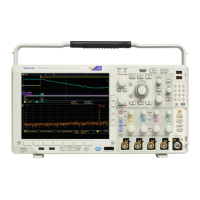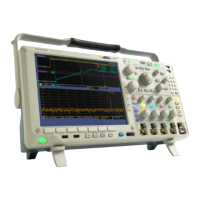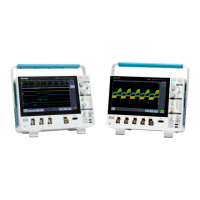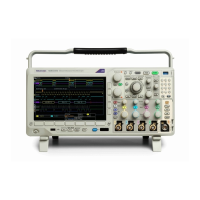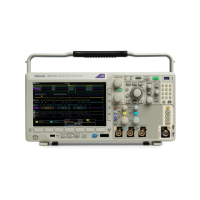

Do you have a question about the Tektronix MDO4054-3 and is the answer not in the manual?
| Bandwidth | 500 MHz |
|---|---|
| Analog Channels | 4 |
| Digital Channels | 16 |
| Record Length | 20 Mpoints |
| Display Resolution | XGA (1024 x 768) |
| Vertical Sensitivity | 1 mV/div to 10 V/div |
| RF Input | 50 Ω |
| Input Coupling | AC, DC, GND |
| Operating Temperature | 0 °C to +50 °C |
| Display | 10.4 inch color TFT LCD |
| Input Impedance | 1 MΩ |
| Trigger Types | Edge, Pulse Width, Logic, Video, Rise/Fall Time, Setup/Hold, Timeout, Runt, Pattern, Serial |
| Vertical Resolution | 8 bits |
| RF Frequency Range | 9 kHz to 3 GHz |
| Connectivity | USB, LAN, GPIB (optional) |
Essential safety precautions to prevent hazards and injuries during operation.
Procedures and checks before setting up the oscilloscope and its accessories.
Step-by-step instructions for powering up the instrument safely and correctly.
Procedures for configuring analog channels to capture signals.
Guide to selecting and configuring various trigger types for signal analysis.
Procedures for performing automated measurements on acquired time-domain signals.
